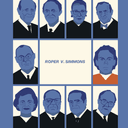
An amicus brief filed in the U.S. Supreme Court in support of Arizona death-row prisoner John Montenegro Cruz presents evidence that Latinx defendants are particularly vulnerable to juror bias regarding determinations of future dangerousness.
LatinoJustice PRLDEF, a civil rights organization that “advocates for and defends the constitutional rights of Latinos under the law,” filed an amicus brief in the case of Cruz v. Arizona supporting Cruz’s argument that Arizona violated his right to due process when his trial judge refused to inform the jury that he would be ineligible for parole if sentenced to life in prison. The brief explains that the trial court’s failure was particularly prejudicial to Cruz, a Latino man, because of widespread negative stereotypes of Latinos as dangerous. “A jury already making a subjective decision about future dangerousness — one that has enormous potential to be influenced by racial bias — is all the more disadvantaged when it does not have accurate information about alternatives to a death sentence,” LatinoJustice wrote.
In an order issued March 28, 2021, the Court granted Cruz’s petition to hear his case, but limited its review to the question of whether the procedural rule applied by the Arizona courts to refuse to consider Cruz’s claim is grounds to also bar him from receiving review of his claim in federal court.
The crux of LatinoJustice’s argument is that failing to tell juries about the unavailability of parole “deprives a Latino defendant of due process of law” because this practice “allows jurors to act upon their uncorrected belief that imposition of the death penalty is the only way to protect their community from the danger of a repeated crime.” LatinoJustice cites research demonstrating that Latinx defendants are disproportionately harmed by future dangerousness decisions, including a 2010 study that found “perceptions of Hispanics as criminals results in an increase in support for punitive crime control measures.”
According to the brief, future dangerousness is used against Latinx defendants in federal capital trials at a higher rate than Black defendants, white defendants, and other minority groups. The brief cited a study of 538 federal death penalty trials that found future dangerousness had been alleged at a disproportionate rate against Latinx defendants in capital charging practices. The study found that “there has been an allegation of future dangerousness against 80 of the 99 (81%) Latino defendants authorized for the federal death penalty.”
The brief focused on bias in juror assumptions about the future dangerousness of defendants of color, explaining that “[d]ecades of studies have shown that juries — even mock juries in controlled experiments— perceive Black defendants as more dangerous than white ones, and that harsher sentences are the result. More recent research has demonstrated widespread belief that Latinos, too, are more prone to crime and violence than whites.” The brief cited a 2012 survey that found 58% of respondents thought “violent” described Hispanic individuals slightly or moderately well. Further, Amici stated that “[r]esearchers have found that jury-eligible participants strongly associated Latino men with “Danger” and white men with “Safety,” and that they held similar dangerousness stereotypes for Latino men as they do for Black men.” This potential for bias to influence jury decision-making renders accurate instructions about future dangerousness even more important for Black and Latino defendants.
In their brief, Amici wrote that jurors have an implicit bias that Latino males are more dangerous and pose a greater risk of future criminality. They argue this is due to disproportionate media portrayals of Latinx individuals as criminals and widespread denigration of Latinx individuals in public affairs and political campaigning. However, juries are also largely unaware of the unavailability of release for defendants sentenced to life. The brief went on to say that these misconceptions about availability of release are exacerbated when racial minorities, like Latinx individuals, are involved: “A juror who (mistakenly) believes a disfavored defendant will be paroled if sentenced to life in prison, and who has been taught to think of that defendant as more dangerous based on his race, will be more likely to sentence that defendant to death over a (mistaken) belief that he poses a future danger to society.”
The consideration of future dangerousness in capital sentencing has gone to the Supreme Court before. In 1994, in Simmons v. South Carolina, the Court held that when future dangerousness is placed at issue, the defendant has the right to rebut the inference, for example, by informing the jury on the actual unavailability of release. Further, the Court has recently heard the issue of racial bias in future dangerousness evaluations. Duane Buck, a former Texas death-row prisoner, was sentenced to death when a psychiatrist presented by his own lawyer said he posed a greater potential danger to society because he is Black. In an Amicus Brief in support of Buck, the American Psychiatric Association wrote: “[t]he unreliability of psychiatric predictions of long-term future dangerousness is by now an established fact within the profession.” On February 22, 2017, the Supreme Court overturned Buck’s death sentence, saying “[o]ur law punishes people for what they do, not who they are.” In the Buck decision, the Court called race-based determinations of future dangerousness a “particularly noxious strain of racial prejudice.”
Ultimately, LatinoJustice referred to Cruz’s case as “a perfect storm of elements that may lead a jury to misjudge future dangerousness” because of “the lack of a Simmons instruction, preconceived notions that parole is always available, and [Cruz was] Latino defendant tried during a time and place where messages about Latino dangerousness were rampant.”
Read Amicus Curiae Brief of Latino Justice in Cruz v. Arizona


